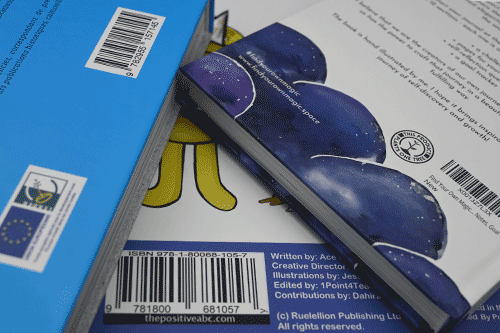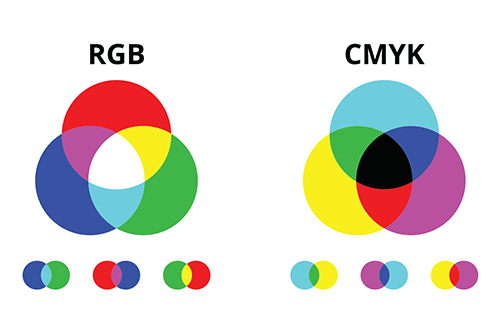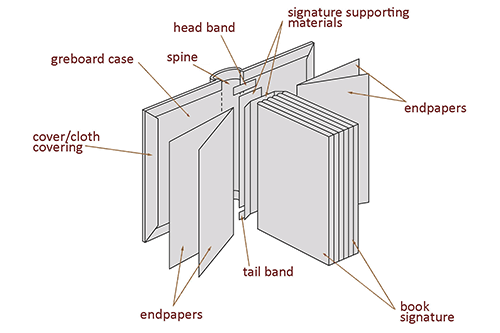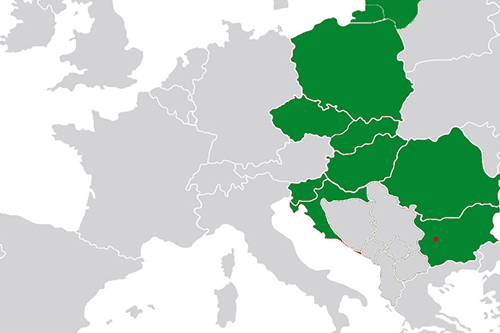The choice of the final format of a catalogue or brochure is among the first issues that need to be resolved when developing this sales tool. The first parameter influencing this choice is the marketing design, created by sales managers and realised by the photographer / graphic designer and the editor. Then come the technical choices. Many possibilities are available, and many options influence the production costs and appearance of a catalogue. Both paper and machine limitations must be taken into account.
Standard formats and custom formats
For all document printing – catalogues, brochures or any other media – standard formats and customized formats exist. Standard formats are so-called because their manufacture ensures optimal use of paper while taking into account machine limitations. Custom sizes are more original but generate a higher waste, as they do not optimize paper consumption.
Several factors influence the format choice:
The sales and marketing design choice of the type of catalogue you wish to print. This is the “final format” in our examples.
The available paper sheet sizes, which we will call the “sheet size” in our examples.
The technical possibilities (limits) of the machines.
Paper sheet sizes
The cost of the catalogue/brochure will depend on the number of pages that will fit on the chosen paper sheet format.
First, the number of pages that fit on a sheet of paper intended for printing is determined. Then we make cahiers by folding the printed sheet. We can have catalogues with cahiers of 4, 6, 8, 12, 16, 24, 32 or 64 pages.
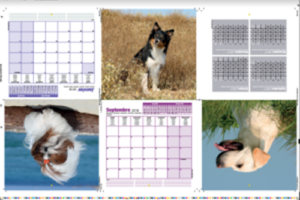
Example: 6 pages
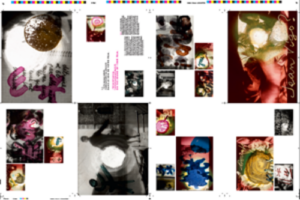
Example: 8 pages
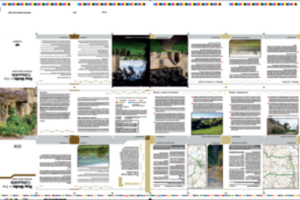
Example: 24 pages
The format of an already trimmed (finished) catalogue also depends on the white margin, required for its manufacture.
For a catalogue with a square-glued spine (perfect binding), after choosing the sheet size here is what we have in standard dimensions for the finished catalogue size:
| Sheet Size * | Maximum Size “Portrait” ** | Maximum Size “Landscape” ** | Maximum Size “Square” ** |
60х84 | 14 x 20 | 20,3х13,5 | 18,4х18,4 |
| 20,3 x 28,5 | 28,4х20 | 27х27 | |
60х90 | 14 x 21,5 | 21,8х13,5 | 18,4х18,4 |
| 21,8 x 28,5 | 28,4х21,5 | 28,4х28,4 | |
64х90 | 15 x 21,5 | 21,8х14,5 | 19,7х19,7 |
| 21,8 x 30,5 | 28,7х21,5 | 28,7х28,7 | |
70х100 | 16,5 x 24 | 24,3х16 | 21,7х21,7 |
| 24,3 x 33,5 |
And for a paperback catalogue with a section-sewn (stitched and glued) spine, we have:
| Sheet Size * | Maximum Size “Portrait” ** | Maximum Size “Landscape” ** | Maximum Size “Square” ** |
60х84 | 14,2x 20 | 20,5х13,5 | 18,4х18,4 |
| 20,5 x 28,5 | 28,6х20 | 27х27 | |
60х90 | 14,2 x 21,5 | 22х13,5 | 18,4х18,4 |
| 22 x 28,5 | 28,6х21,5 | 28,6х28,6 | |
64х90 | 15,2 x 21,5 | 22х14,5 | 19,7х19,7 |
| 22 x 30,5 | 28,7х21,5 | 28,7х28,7 | |
70х100 | 16,7 x 24 | 24,5х16 | 21,7х21,7 |
| 24,5 x 33,5 | – | – |
For standard formats, a catalogue, like any other printed medium, is referred to either by height or by width. In the first instance we speak of a “French” or “portrait” format, and in the second of “Italian” or “landscape”. The format can also be “square”.
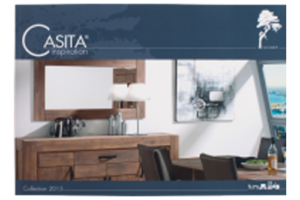
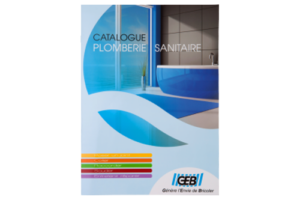
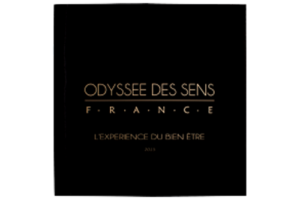
The technical possibilities (limits) of the machines.
Final formats also depend on machine limits, with a minimum size and a maximum size.
The table below shows the limits for the different manufacturing choices.
| min size * | max size * | ||
| Stapled | 10 x 15.8 | 29 x 43 | |
| Glued | 10 x 14 | 28.7 x 41 | If the size of the spine exceeds 1 cm, the maximum width decreases. The width of the total cover, including the flaps, cannot be greater than 59 cm |
| Sewn | 10 x 14 | 28.7 x 41 | If the size of the spine exceeds 1 cm, the maximum width decreases. The width of the total cover, including the flaps, cannot be greater than 59 cm |
| Hard | 10 x 14,5 | 29 x 32 | The maximum thickness of the spine is 6 cm |
* All formats are in centimetres.
** The sizes may vary slightly from one printer to another depending on their machines.
Larger or smaller formats, outside the technical machine limits, are possible but with manual or semi-automatic intervention. Pulsio Print consultants are at your service to deal with these specific requests.
Other elements that influence the format of a catalogue
Several other technical factors influence the choice of format for a catalogue or brochure. These are the type of manufacture, the type of paper and the presence of printable elements near the outer edges.
To manufacture a glued catalogue (perfect binding), for example, we need to provide a margin of 2 or 3 mm beyond the final format width on the side of the spine that is to be glued (this is not necessary if the catalogue is to be sewn). Consequently, we must deduct 2-3 mm from the maximum possible size to ensure successful binding (see the different formats in the table above).
The cost of producing a catalogue or other printed product is closely linked to the size of the paper sheets available. It therefore depends on the choice of paper. For example, it is quite possible that a catalogue printed in A5 final format on offset paper will be cheaper than on coated paper, despite the fact that the price per ton for the two papers is the same. If all the parameters of the catalogue are identical and the paper price is as well, this difference can be explained by the unavailability of a suitable size for the chosen paper to be printed. In our A5 catalogue example, offset paper can be found in 64 x 90 cm size, which is the optimal size for A5 final format. Suppose then that this paper sheet size is not available for coated paper, and 70 × 100 cm must be used instead. The bottom line calculations for the sheets with dimensions of 70 x 100 cm will necessarily lead to a higher price for the coated paper version than for the offset paper version, whose sheets are available in optimal format.
It is also important to know that some papers exist in unique formats, including designer and art papers, which can create greater waste (more cutting) and therefore a higher cost.
The presence of printable elements in blank backgrounds near the edge of a catalogue (a frame for example), or the presence of elements that bleed (graphic elements that come up to the edge), decided on during the graphic design, require us to provide greater margins to avoid damaging the elements in question when cutting the catalogue into the final format.
In fact, the sheets of paper which pass through the machines are not printable from end to end. We are talking “maximum printable size”. There has to be an outer margin of about 8 mm. And if the final format of the catalogue is chosen such that after printing the pages arranged on the sheet cover it completely, then this outer margin must be used as a white margin for the pages. On the other hand, if this 8 mm margin is not white but contains bleeds and printable elements, then the printable paper sheet will contain fewer catalogue pages, which inevitably increases the number of sheets to be printed and hence production costs.
Choosing and optimizing your catalogue format is a complex process because of the sheer number of parameters to take into account. This is what makes the printer-client relationship of primary importance in guaranteeing project success.
Our Pulsio Print advisors are at your disposal at all times for any questions and personalised solutions.
Check our price: it’s free and it only takes seconds!
